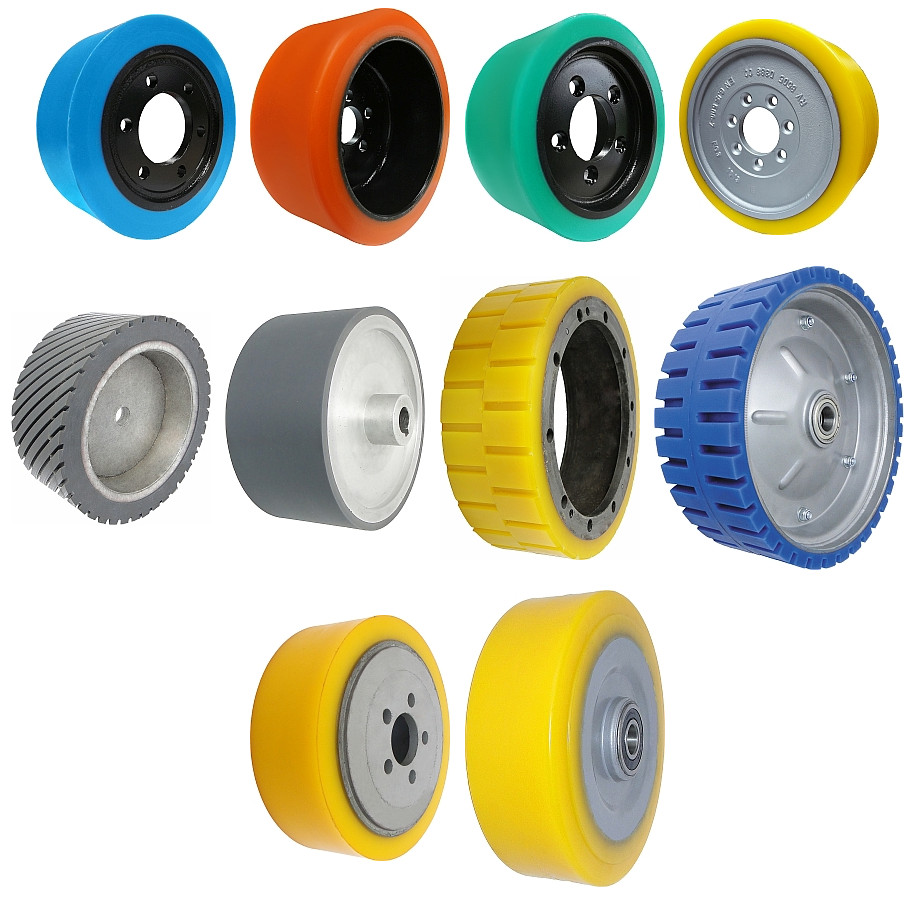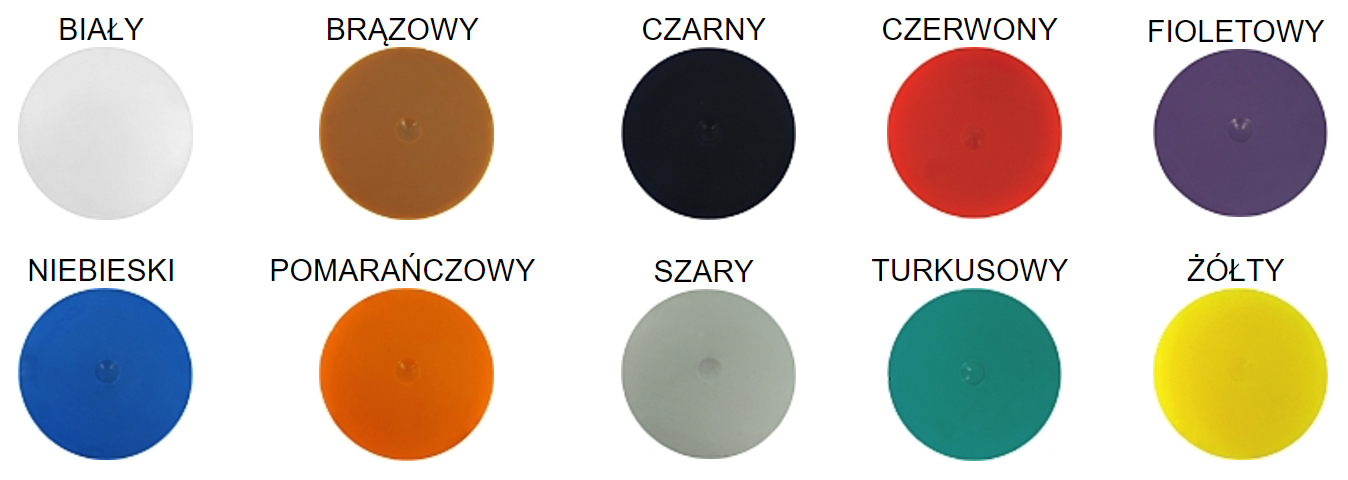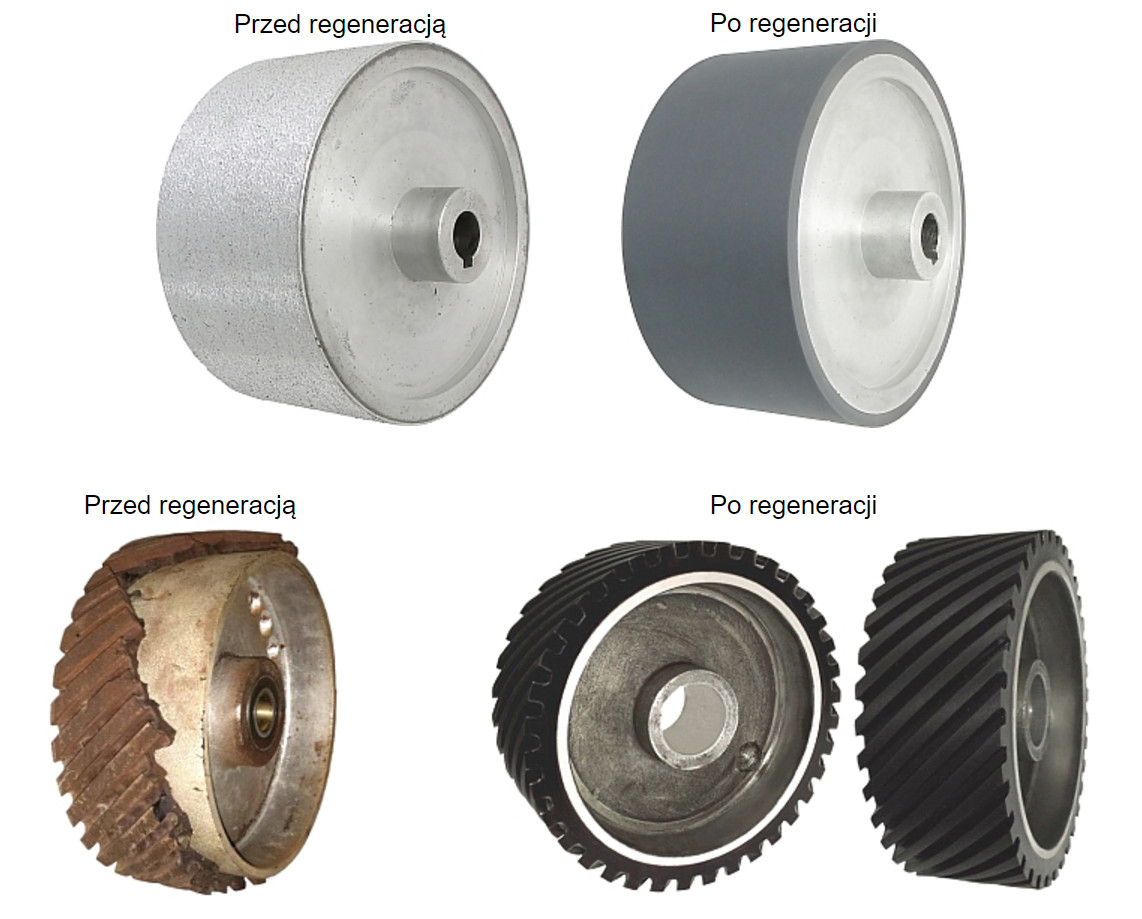We recover a wide range of polyurethane items of all shapes. In particular we recover all kinds of handles and gaskets.
We also specialize in recovering wheels and wheel rollers of the following types:
- Wheels and wheel rollers used in forklifts
- Battery run vehicles
- Baking containers
- Pallet trucks
- Bandsaws
- Conveyor belts
- Rollers and wheels used in wood economy machines of manufacturers such as: WEINIG, SIMP, HOLZHER, MAGGI, HAFFNER, GUBISCH WEGOMA, FREEDMAX, PANHANS, FESTO, STEFF, FELDER, ROMA, ELU, FEEDER GRIP
We also recover wheels used in forklifts and many other jacks and lifts.

We recover items used in the automotive industry such as parts of control arms, clutches and steel plates.
We recover wheels, rollers, pipes made of metal, iron, aluminum and plstic.
We make and recover items of 40 to 80 degrees Shore of hardness.

The products we make, recover and customize come in the following colours: White, brown, black, red, purple, blue, orange, grey, turquoise, yellow.

We also recover and manufacture other items of ‘stable’ polyurethane. ‘Stable’ polyurethane is the most resistant to attrition and very high load. It is the perfect for solution for clients expecting the highest quality possible. Items of this type of polyurethane require a fixed period of seasoning. The chart below presents different seasoning periods depending on the layer thickness.
| Layer thickness | 6mm | 6-12mm | 12-20mm | 20mm |
| Seasoning period | 2 weeks | 3 weeks | 4 weeks | 5 weeks |
The recovery of wheels and wheel rollers involves: • Disposing of the old layer • Applying a new layer • Finishing off the new layer
- Disposing of the old layer
- Applying a new layer
- Finishing off the new laye

Tyre rubber is a flexible product of the vulcanization of natural or artificial rubber at the temperatures ranging from 110C-180C in a period of time between several minutes to several hours. It is obtained through processing substances like rubber and ones facilitating processing and giving rubber its properties. The most important ingredients of are the following: Natural or artificial rubber,
- Vulcanizing substances – usually it is sulfur or compounds giving off sulfur and substances speeding up vulcanization reactions (thiazoles, sulfonamides),
- Weakeners – substances facilitating vulcanization and decreasing the hardness of rubber when vulcanized, for example: sap, coal pitch, paraffin wax, minerals oils, ceresin,
- Fillers – organic or non-organic solids dispersing at various rates, implemented in order to improve the processing properties of rubber and making it more adjustable ( types of soot, synthetic silica, silicate, chalk),
- Protective substances that prevent rubber from light, heat, oxygen, ozone, radiation, aggressive chemical habitats and other factors decreasing the properties of rubber products,
- Blowing agents – ingredients of rubber blends that give off gas like hydrogen, carbon dioxide and steam
- Rubber is a very complex material consisting of a number of additional ingredients. The properties of rubber are obtained in the final processing stage. Vulcanization is carried out at a high temperature, usually under pressure. The heat causes sulfur and other ingredients to melt, which makes rubber less sticky. Next, rubber is vulcanized and its stickiness increases.
- Polyurethane outweighs rubber due to its ability to resist stretching, ripping, being overloaded. The properties of polyurethane far exceeds those of rubber.
